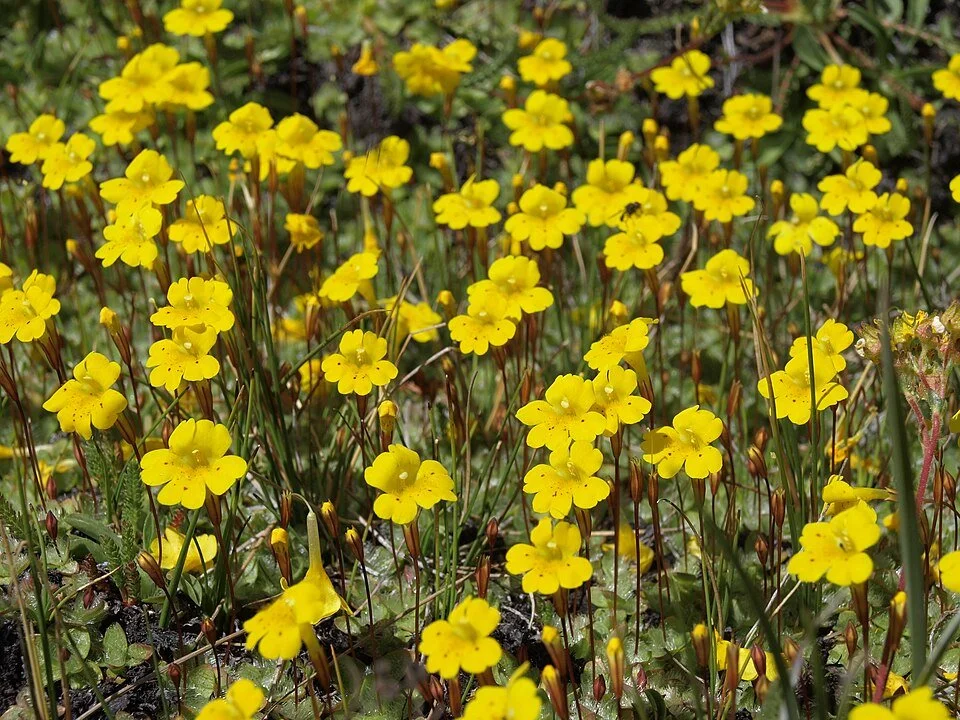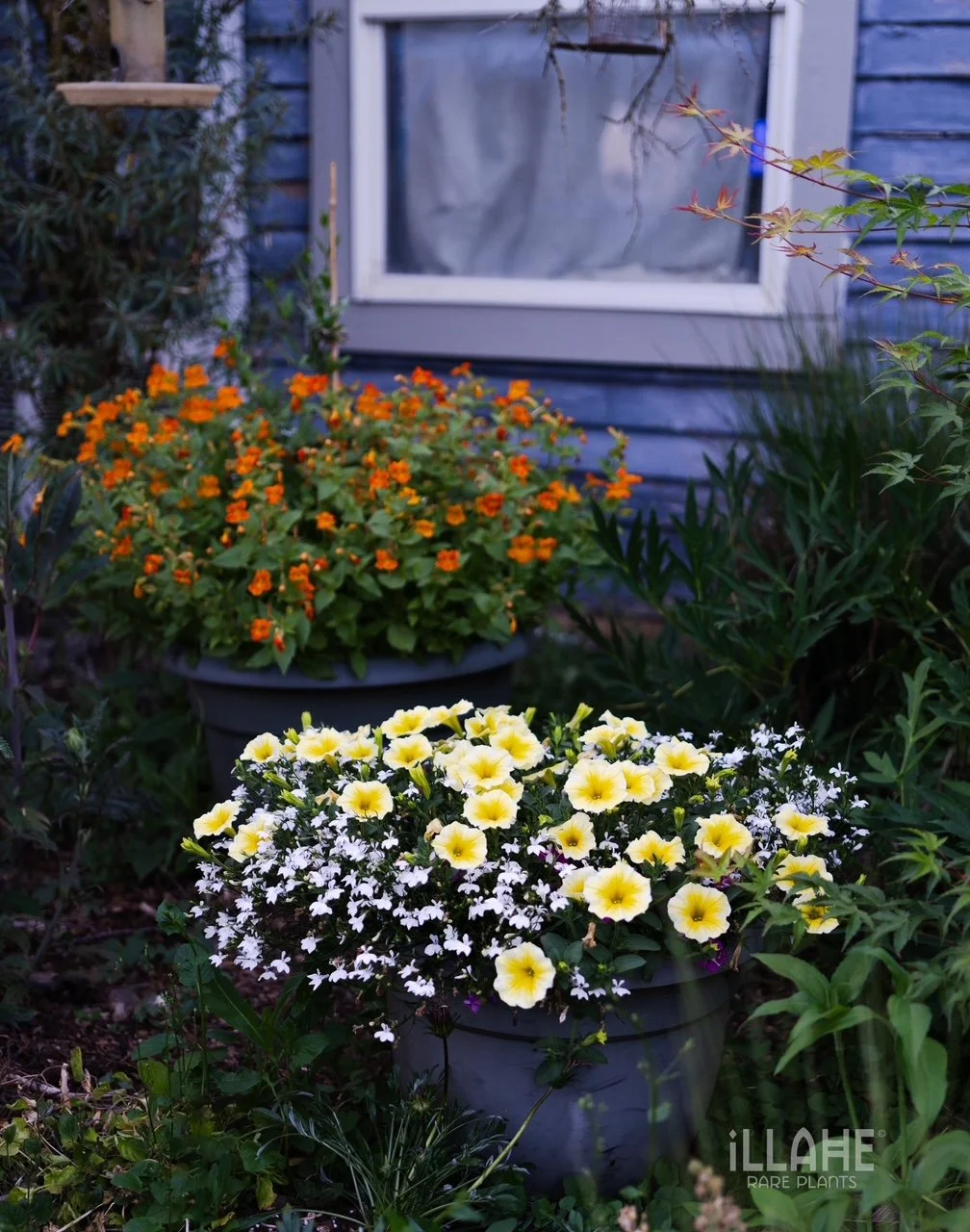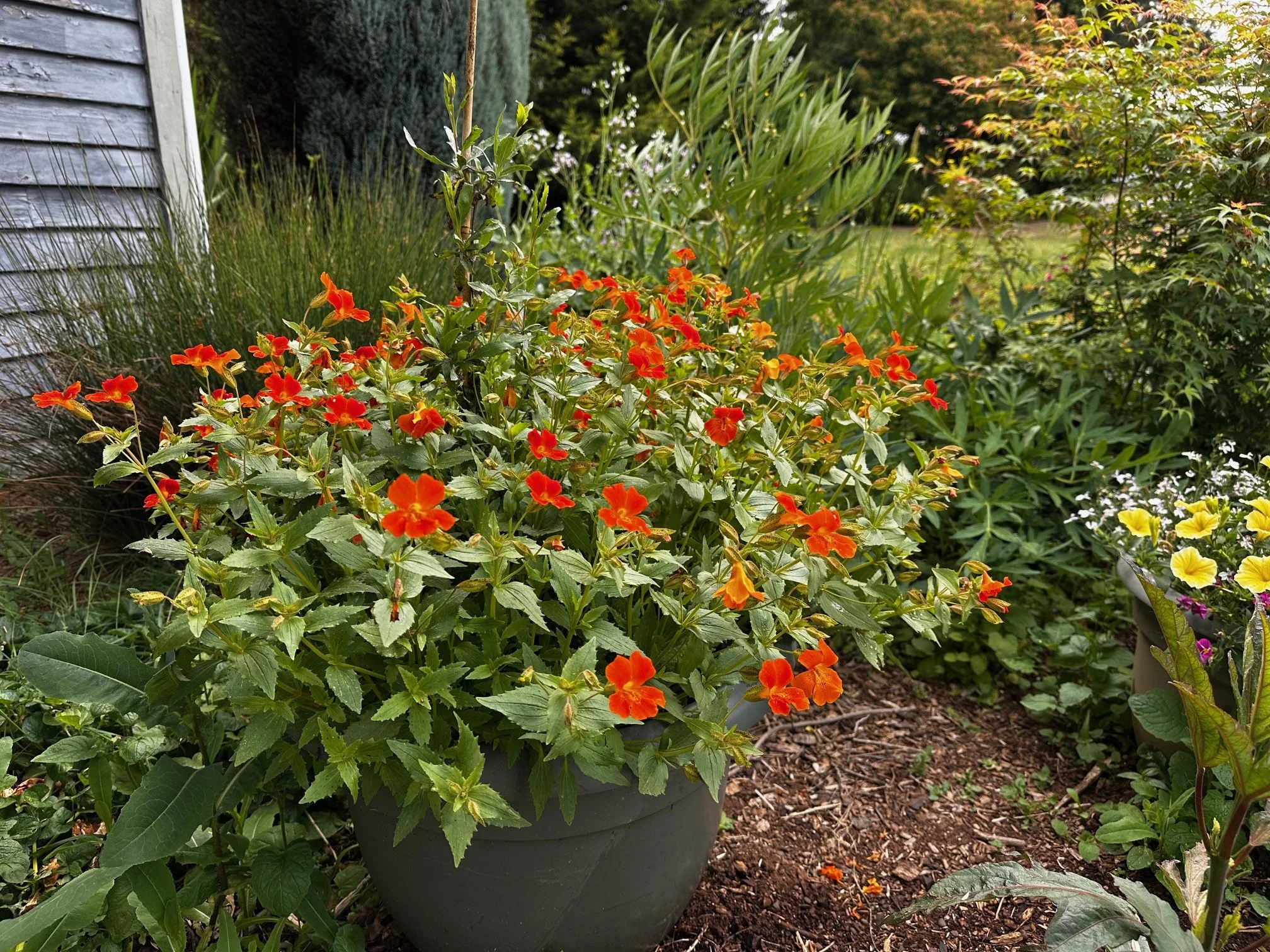
Diplacus 'Cherry'
This outstanding hybrid bush monkey flower lights up the garden with a profusion of vivid cherry-red blossoms that glow against the glossy evergreen foliage. Bred from California’s native bush monkey flowers (Diplacus aurantiacus and allied species), which are naturally found in USDA zones 8–10 along the Pacific coast, ‘Cherry’ combines the rich color intensity of modern hybrid lines with the toughness and drought-tolerance of its wild ancestors. Compact yet bushy, it forms a tidy shrublet that flowers over a long season, particularly when trimmed lightly after the first flush. Best in full sun to light shade with well-drained soil, this selection thrives in Mediterranean-style gardens, rockeries, and containers. Like its kin, it benefits from lean soils and moderate summer water, but once established it is remarkably drought-hardy. Hardy in mild climates, ‘Cherry’ also draws hummingbirds, which adore its nectar-rich blooms. While naturally adapted to zones 8–10, it may also be grown in cooler regions if given winter protection or cultivated in containers that can be sheltered during the coldest months.
This outstanding hybrid bush monkey flower lights up the garden with a profusion of vivid cherry-red blossoms that glow against the glossy evergreen foliage. Bred from California’s native bush monkey flowers (Diplacus aurantiacus and allied species), which are naturally found in USDA zones 8–10 along the Pacific coast, ‘Cherry’ combines the rich color intensity of modern hybrid lines with the toughness and drought-tolerance of its wild ancestors. Compact yet bushy, it forms a tidy shrublet that flowers over a long season, particularly when trimmed lightly after the first flush. Best in full sun to light shade with well-drained soil, this selection thrives in Mediterranean-style gardens, rockeries, and containers. Like its kin, it benefits from lean soils and moderate summer water, but once established it is remarkably drought-hardy. Hardy in mild climates, ‘Cherry’ also draws hummingbirds, which adore its nectar-rich blooms. While naturally adapted to zones 8–10, it may also be grown in cooler regions if given winter protection or cultivated in containers that can be sheltered during the coldest months.








